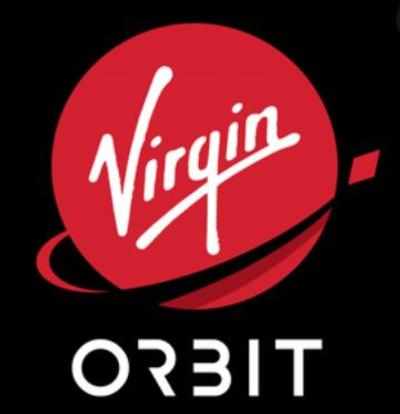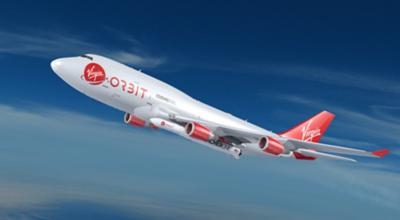‘Tis Better to Try and Fail …
On 09 January 2023, as Spain’s Canary Islands settled into the darkness and quiet of the Western European midnight hour, a camera operated by the Spanish Meteor Network captured a spectacular fireball descending through Earth’s atmosphere. Notwithstanding its uncanny resemblance to a meteor, the phenomenon was, in fact, a doomed Virgin Orbit LauncherOne rocket and its payload of nine satellites, plunging as one toward the North Atlantic and a watery mass-grave.

Moments after its release from a specially modified Boeing 747-400 dubbed Cosmic Girl, the LauncherOne rocket experienced an anomaly, leading to the premature shutdown of its second-stage engine and consequent failure to attain orbit.
Within hours of the rocket’s loss, a joint investigation of the mishap was undertaken by Virgin Orbit, the U.S. Federal Aviation Administration, the U.S. Department of Defense (DOD), the National Transportation Safety Board (NTSB), and the U.S. National Reconnaissance Office (NRO). Because Cosmic Girl had departed British soil, the U.K. Air Accidents Investigation Branch and Civil Aviation Authority took part in the investigation as well.
In the end, the mission's failure was attributed to a faulty fuel filter.
Alas, a great-deal more than a single LauncherOne rocket and nine satellites burned up and sank that January night. Within minutes of the mission’s failure—lives-treamed worldwide—Virgin Orbit shares lost nearly 25-percent of their value.
A scramble for funding ensued, during which Virgin orbit, on 15 March, paused operations and furloughed the majority of its employees. On or about 23 March, venture capitalist Matthew Brown set forth he’d been engaged in negotiations to invest $200-million in the cash-strapped and faltering Virgin Orbit. Regrettably, negotiations broke down, and on Thursday, 30 March 2023—following an announcement that the company had failed to secure “meaningful funding"—Virgin Orbit announced it would shut down operations and lay-off 675 of its 775 employees. Virgin Orbit CEO Dan Hart made the fateful announcement during an all-hands company meeting.
In addition to consigning Virgin Orbit to history’s dusty oblivion, the 09 January mission failure was a stinging embarrassment to the U.K., which is among the few major world-powers to not have its own space-launch program. By approving the mission’s launch from a new spaceport in Cornwall, the U.K. space agency tacitly hitched its proverbial wagon, and those of a great many prospective British space enterprises, to Virgin Orbit. Cornwall occupies the extreme southwestern peninsular aspect of the British Isle and, in a geographical sense, is the most advantageous U.K. locale from which to initiate space launches.
Four of the nine satellites lost during the 09 January mission—which had been ascribed the Rolling Stones-esque sobriquet Start Me Up—were salient to programs officiated by U.S. and U.K. military labs; another was the first satellite built by the Middle Eastern state of Oman.
Virgin Orbit was an early entrant in the lucrative micro-launcher market, a sector defined by frequent launches of small rockets carrying lighter (up to three-hundred-kilograms) payloads. The company, upon the advice of engineers keen to cash in on satellite-launch profits, was spun-off in 2017 from Virgin Galactic, Sir Richard Branson’s pioneering but costly space tourism venture.
The demise of Virgin Orbit occasioned renewal of long-standing questions pertaining to the viability of air-launch schemes as a means by which to impel satellites and orbital vessels spaceward. Unlike conventional space launches which depart vertically from static pads, air-launches are made from airborne motherships—large aircraft the likes of Cosmic Girl and Stratolaunch’s colossal, twin-fuselage Roc. Conceived of by maverick aeronautical wizard Burt Rutan—who designed and oversaw the construction of SpaceShipOne, the first privately-funded manned vehicle to reach space—air launches consume significantly less fuel and cash than surface launches and, theoretically, present a lower degree of risk to payloads.
Branson, a man whose wealth and reputation were built on risky ventures, saw potential in Rutan’s orbital ambitions, and partnered with the renegade aerodynamicist to found Virgin Galactic—a space tourism concern that promises well-heeled types recreational orbital flights for the immodest cost of $450,000 per seat.

In 2004, Branson somewhat prematurely declared Virgin Galactic’s first paying passengers would ascend safely to admire space’s grandeur in 2007. Fourteen years thereafter, Virgin Galactic made its 2021 inaugural flight, upon which Branson himself rocketed into space in the company of two pilots and three Galactic executives aboard a craft predictably christened SpaceShipTwo. The flight drifted off course, however, compelling the craft’s pilots to heroic feats of airmanship by which an embarrassing emergency landing was precluded—just.
An FAA investigation of the narrowly-averted faux pas turned up a structural weakness in the mothership’s wing near the point at which SpaceShipTwo anchored to the larger craft—called Eve, after Branson’s mother. The findings prompted the FAA to ground Virgin Galactic flight operations pending resolution of Eve’s wing woes. The process of reengineering, refabrication, and retrofit spanned 18 months. Currently, Eve is hangared at Virgin Galactic’s Spaceport America in Nevada, where the aircraft is being prepared for a series of test-flights during which she will carry Unity—one of two extant SpaceShipTwo vessels. Work on the second SpaceShipTwo, Imagine, is proceeding slowly.
The coming test-flights will see Unity dropped for a series of unpowered glides to Earth—after the fashion of 1977’s early Space Shuttle tests.
In October 2019, Virgin Galactic stock debuted on the New York Stock Exchange at an opening price of nearly $60-per-share. At the end of trading on 06 April 2023, the stock closed at $3.12.
From its inception, Virgin Orbit was undercapitalized. The company more or less leveraged Branson’s Indiana Jones-meets-Warren Buffet reputation and gift for hype against enormous risks and costs the likes of developing the LauncherOne rocket, retrofitting and operating a Boeing 747-400, and pioneering the inchoate air-launch system. Between the time the company commenced operations in 2020 and its 2023 shuttering, Virgin Orbit flew only six missions, two of which failed and the remainder of which delivered only 33 satellites to Earth orbit.

In addition to financing shortfalls, Virgin Orbit was plagued by questionable management. Three of the concern’s top executives, to include CEO Dan Hart, were recruited from Boeing—a company infamous for its worst-in-industry (least innovative and perpetually over-budget and behind schedule) space-project management. In the days following the announcement of Virgin Orbit’s imminent closure, several pink-slipped engineers came forward to voice allegations of poor management and leadership—the final and, perhaps, most egregious instance of which was Hart’s presentation of the news that the company was ceasing operations and the better part of seven-hundred employees were to lose their jobs, which he delivered virtually, a face on a screen, remote and wholly insulated from the 675 tragedies he was perpetrating—a common practice at Boeing.
Branson believed with the fervor peculiar to visionary billionaires and madmen that Virgin Galactic would render excursions from Earth to Space and back as regular and dependable as United Airlines has rendered round-trips from ORD to DFW. Alas, air-launch—the common denominator by which Virgin Galactic and Virgin Orbit are inexorably bound—has proved a difficult and fiddly means by which to slip Earth’s surly bonds. Notwithstanding its inherent complexities and cascades of variables, Branson remained resolutely fixated upon pushing forward with air-launch, and in so doing, steered his companies down a technological blind alley from which no return now seems likely.
 ANN's Daily Aero-Term (12.19.25): Ultrahigh Frequency (UHF)
ANN's Daily Aero-Term (12.19.25): Ultrahigh Frequency (UHF) NTSB Prelim: Cirrus Design Corp SR22T
NTSB Prelim: Cirrus Design Corp SR22T Classic Aero-TV: The Red Tail Project--Carrying the Torch of the Tuskegee Airmen
Classic Aero-TV: The Red Tail Project--Carrying the Torch of the Tuskegee Airmen Aero-News: Quote of the Day (12.19.25)
Aero-News: Quote of the Day (12.19.25) Airborne 12.17.25: Skydiver Hooks Tail, Cooper Rotax Mount, NTSB v NDAA
Airborne 12.17.25: Skydiver Hooks Tail, Cooper Rotax Mount, NTSB v NDAA





